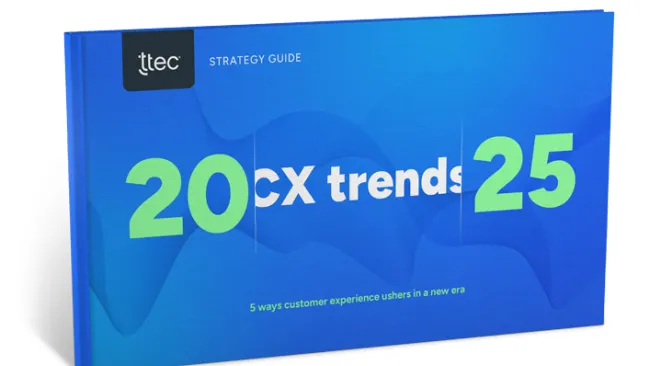Easing tax season stress
A software company wanted to improve its ability to handle the fluctuations in customer demand while consolidating training with a single partner
Easing tax season stress
A software company wanted to improve its ability to handle the fluctuations in customer demand while consolidating training with a single partner
in training time
from live chat
in conversion rates
The challenge
A multibillion-dollar tax preparation software company had a challenging contact center staffing issue. It operates in a highly seasonal business, with peak employment six times the figure for slow periods. But it was relying on three different vendors, which caused problems with quality control — all exacerbated by several years of underinvestment in staff training.
Our client wanted to improve its ability to handle the fluctuations in customer demand while consolidating training with a single partner. And it wanted to trim two days off of what had been a 12-day training schedule, with an eye to another two-day reduction down the road.
Our solutions
First, to manage the fluctuations in seasonal demand, TTEC made full use of its humanify@home solution, which allowed the use of remote associates to manage incoming calls during especially busy times. But staff members, whether they worked at home or in a central contact center, would be of little use to the company if not properly trained. One of the keys to TTEC's success involved its awareness that people don't learn very well when they are forced to listen passively to lengthy class sessions that are overly complex and painfully boring. The company's approach to training was entirely different from what is commonly practiced by others in the industry.
TTEC made a thorough study of the sorts of issues the associates were having to deal with. This meant looking through more than a year of call logs, identifying the customer issues that arose most frequently. Perhaps not surprisingly, it found that most of the calls involved the same relatively small number of issues. Armed with insights like those, a complete revamping of the company's training curriculum was proposed and quickly approved.
But the biggest change TTEC made did not involve what material was presented, but instead, the way it was presented. Previously, training sessions involved facilitators standing in front of a class, working their way through PowerPoint presentations and pausing occasionally to hand out PDFs. The sessions were not only dull, they were ineffective, and no steps were taken to determine if instructors’ material was getting understood or retained. Staffers would complete a course, but then on the first day on the job have no idea how to answer even the most basic questions that customers might ask.
Learning by listening wasn't working, so TTEC replaced it with "learning by doing." The entire training session was restructured to emphasize the real-world conditions that staffers would face once they were actually on the job. Starting on the second day, trainees were responsible for dealing with live questions — posed by other trainees in a bit of double role-playing that gave participants insights into both sides of the customer-contact center experience.
The questions started out simply — "How do I log on?" was the most common query — but progressed in complexity over the course of the training. With this approach, not only could new material be presented, but staffers could quickly gain confidence in making use of it in real-world interactions. This meant that students weren't simply learning theory by rote memorization, but were engaging in tasks they would be doing on a daily basis with customers.
The new approach to training was a resounding success. Staffers were able to hit the ground running on their first day in production. The first year of the program, there was a 90% decrease in open tickets on the busiest day of the year, compared to the year before.
As TTEC’s relationship with the client strengthened, it added a chat support feature which put the same emphasis on real-world customer interactions. Chat specialists were not only trained to help small business customers with technical questions, but also coached on how to make the best use of the product. In one year alone, those conversations led to over 140,000 leads, and a 109% increase in conversion rates. Revenue from live chat also influenced $51 million in revenue. There was also a significant increase in NPS scores as a result of the engaging, personalized conversations.
The results
The new approach was so efficient that TTEC was able to pare back the days needed for the training from 10 to eight days. Equally importantly, the need for expensive, on-the-job retraining was significantly reduced. The company was much more comfortable with the experience it was able to offer its customers, and in fact began to view the strength of its contact center as a competitive advantage. The stresses associated with rapidly ramping up and down with seasonal demand became a thing of the past.
Customer support has been put on a solid footing, laying the groundwork for superior customer experiences.












